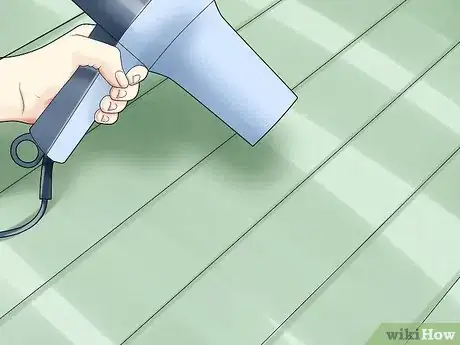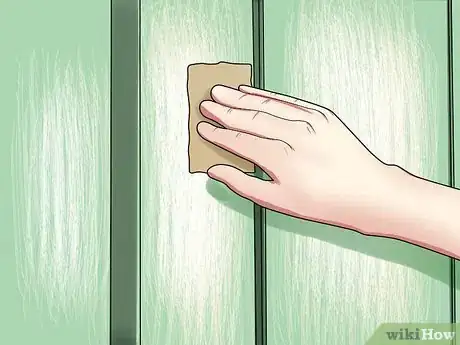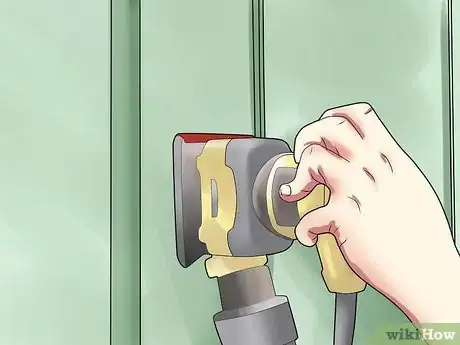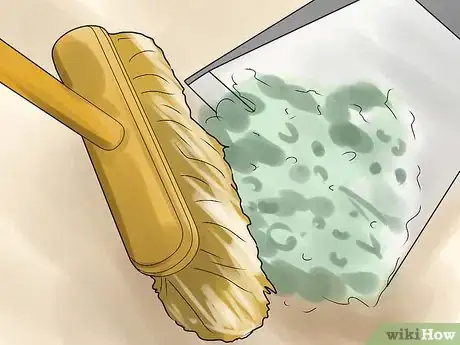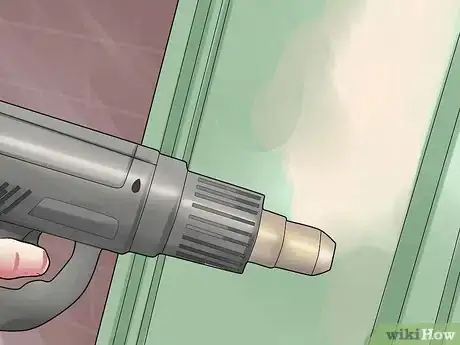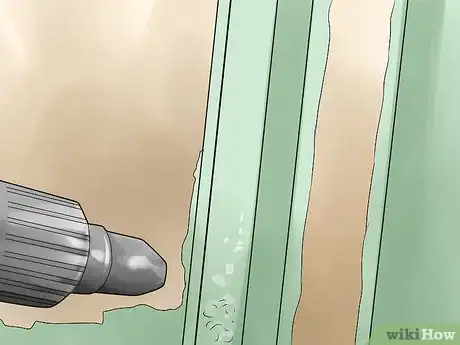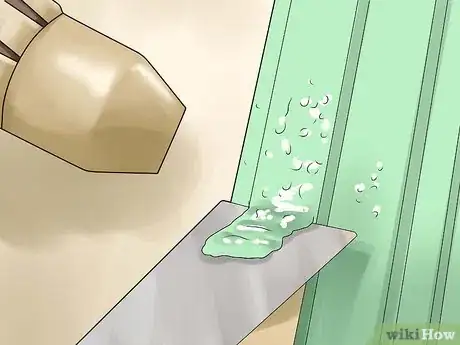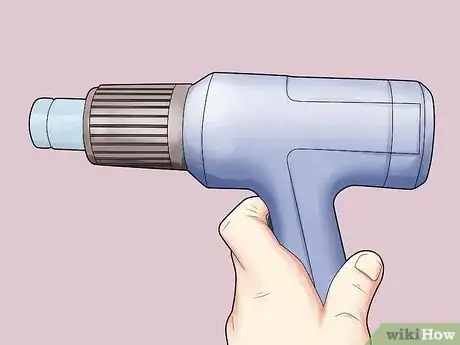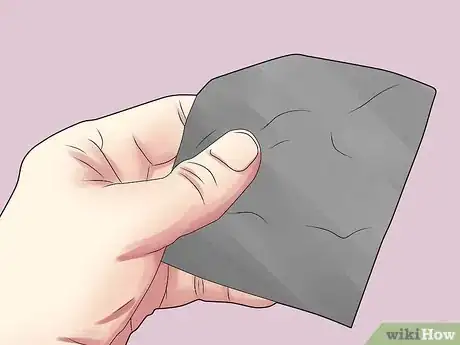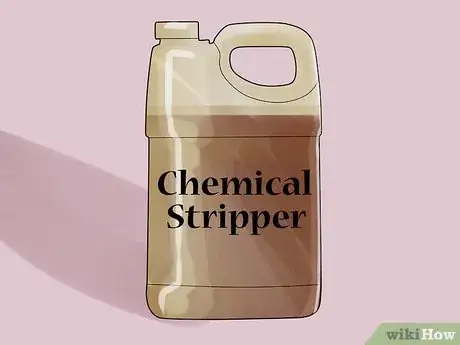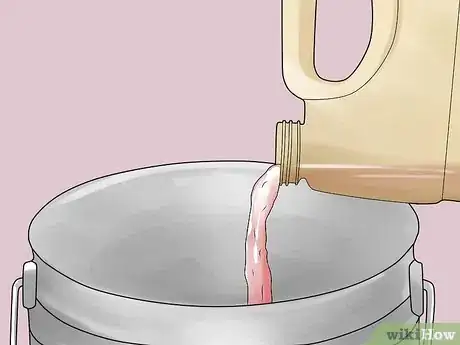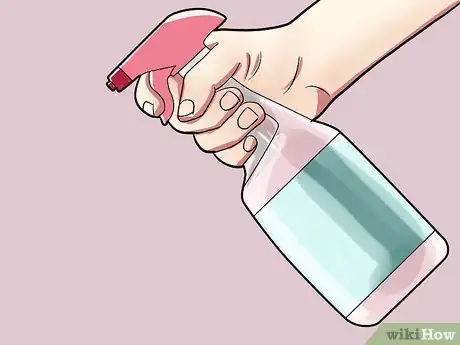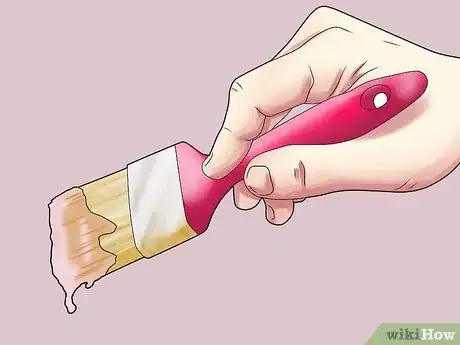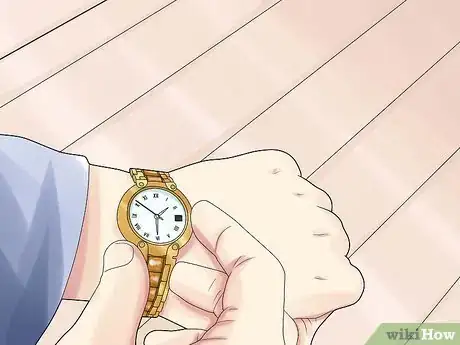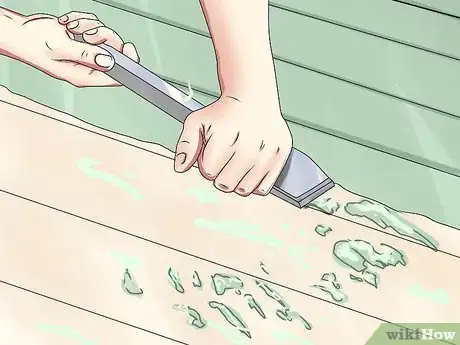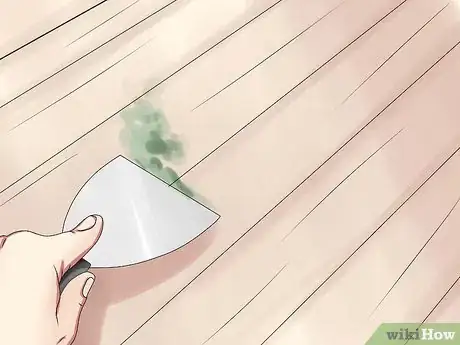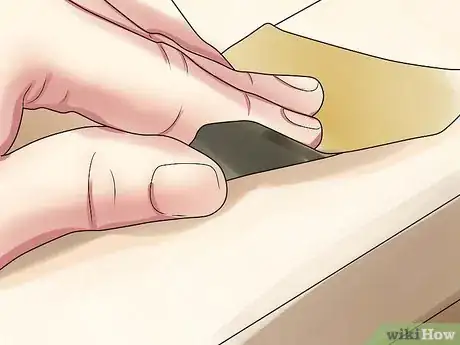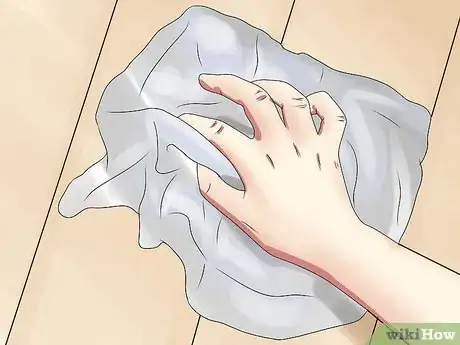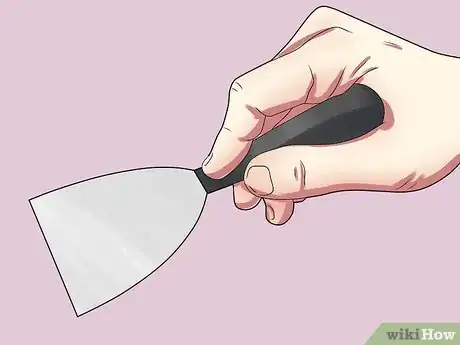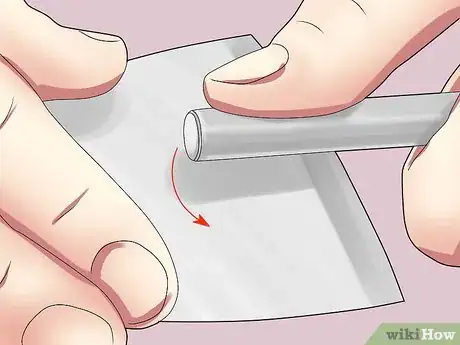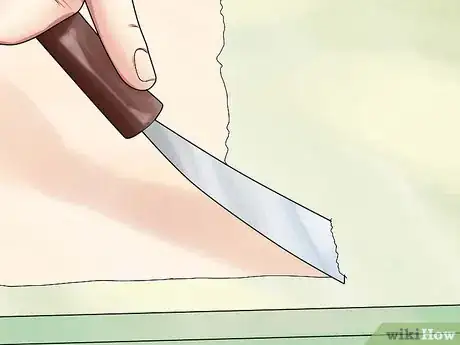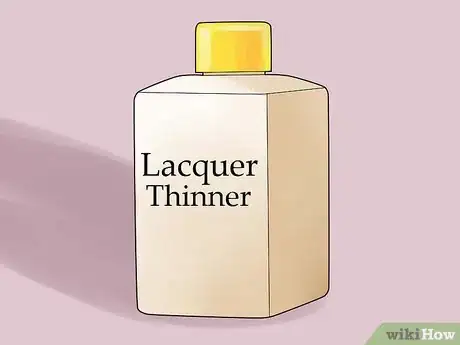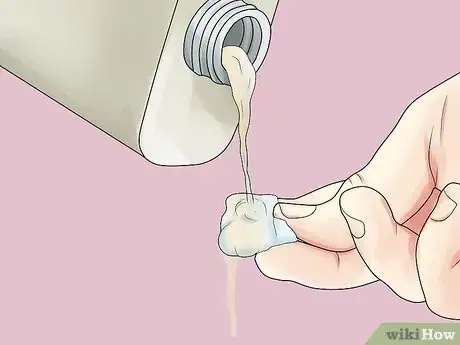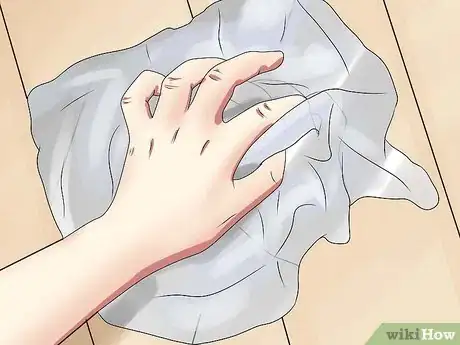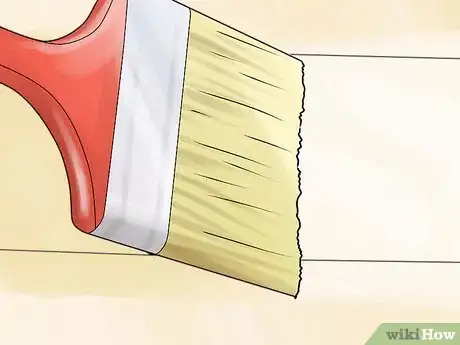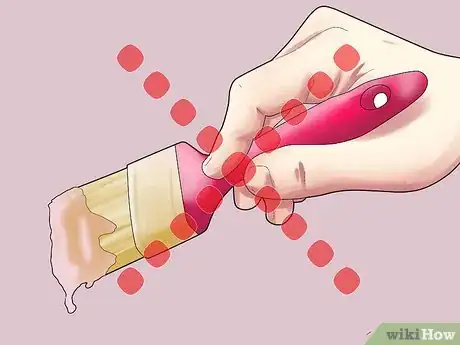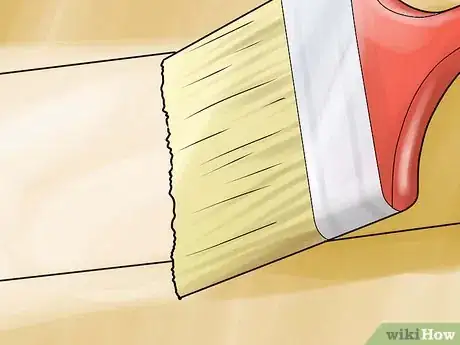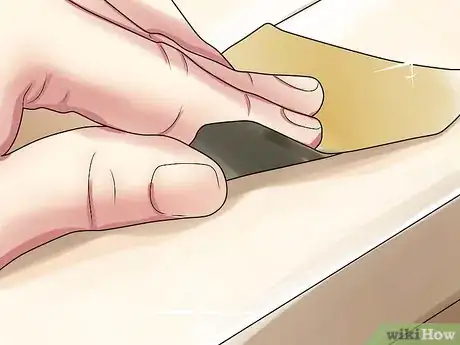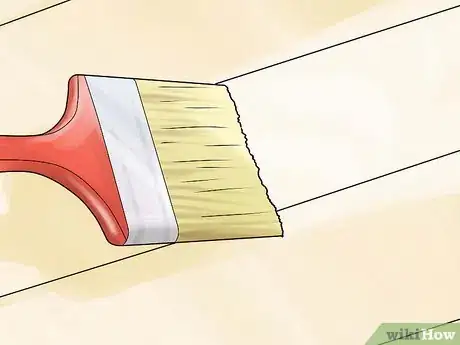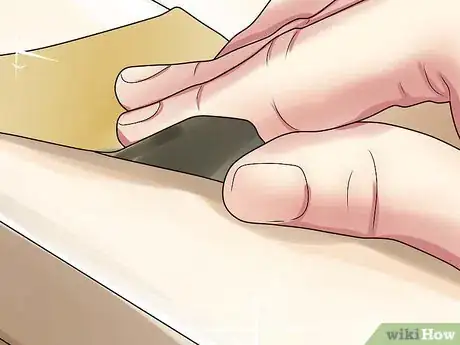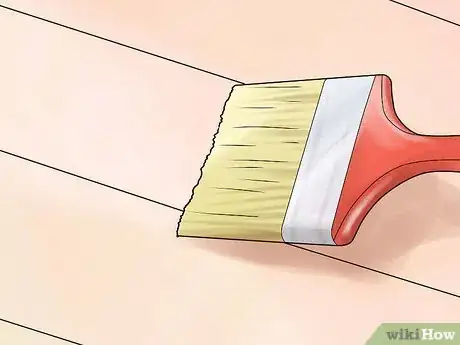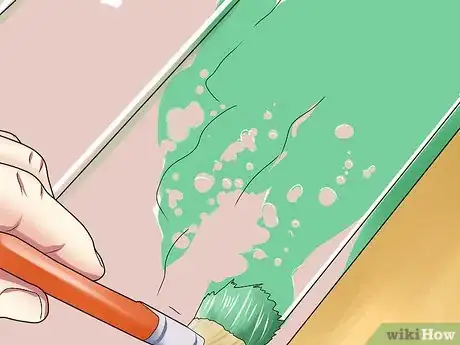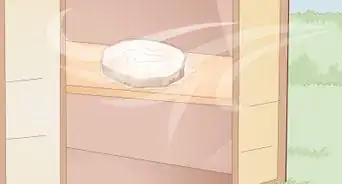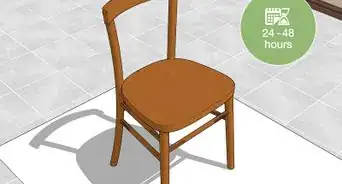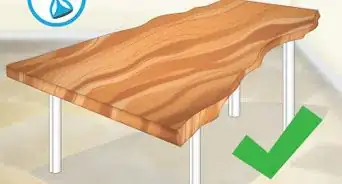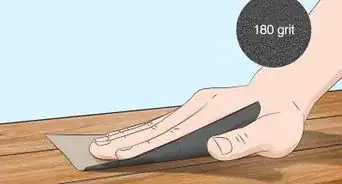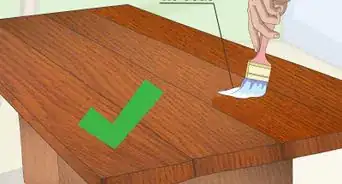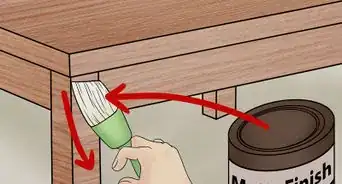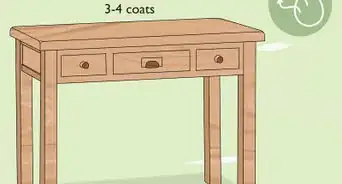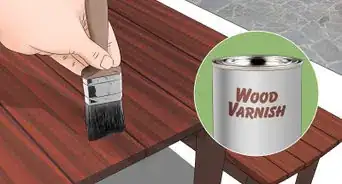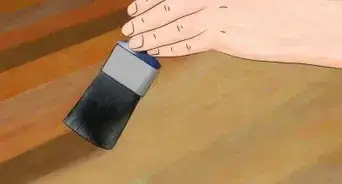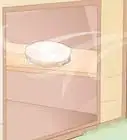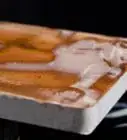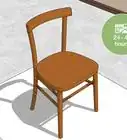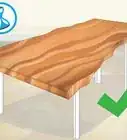This article was co-authored by Sarah Fogle. Sarah Fogle is a DIY Home Improvement Specialist and the creator of Ugly Duckling House. With over a decade of experience, Sarah specializes in beginner-friendly home remodeling projects. Sarah holds an MBA from Georgia State University. She has been featured in multiple publications including Better Homes and Gardens and Make Magazine. She has also partnered with brands such as Lowe's, Home Depot, and Martha Stewart Crafts.
There are 8 references cited in this article, which can be found at the bottom of the page.
wikiHow marks an article as reader-approved once it receives enough positive feedback. In this case, 100% of readers who voted found the article helpful, earning it our reader-approved status.
This article has been viewed 1,032,202 times.
Removing paint, as we all know, is very hard. In this article, you will learn 5 methods on how to carefully remove paint from wood and finish them off with paint or varnish. Try any of the following methods and see which one is better.
Steps
Sanding Method
-
1Get a fair supply of Sandpaper with two choices of grains: Rough to do the initial work (getting rid of the undesired paint) and Kind-of-Smooth Sandpaper (to finish the sanding and then polish the wood that will appear underneath). Sand firstly with the rough one then the soft one.[2] Don't sand too hard and friction causes heat!
-
2You will do a far nicer job if you use an electric sander.[3] Sanding all through is a very hard and frustrating job as the Sandpaper gets clogged up with the paint in no time.The most sensible thing to do is soft sanding once you're done with the old paint. Make sure you're sanding following the wood grain, if you don't, you'll scratch the wood surface and ruin the whole project.
-
3When you are done sanding and polishing, get rid of any wood dust on a wood by dusting the wood with a rug lightly imbibed in paint solvent and just then you can start painting. Make sure the surface is really smooth. If it is a small object, just simply dust it with a brush or blow it away. If there is wood dust on the floor, sweep it away.
Heat Gun Method
-
1Now you may use a very dangerous but easier method. You will need a heat gun.[6] Make sure you are wearing gloves to do this, goggles and a face mask and make sure water is close so the wood you're working on doesn't catch fire. Position the heat gun 6 to 8 inches (15 to 20 cm) above the painted wooden surface after you switch the heat gun on.
-
2Warm small areas of the wood up (but not too much so the wood doesn't turn to crisp or there isn't a burn mark). Slowly move the heat gun over the surface. Pass the heat gun over the surface of the section of wood you are currently working on. Continue passing it side-to-side and up-and-down without ceasing.
-
3While the old paint is tender because of the heat - scrape the paint up as it wrinkles. Once the paint begins to bubble and wrinkle, immediately scrape the paint up with a broad paint scraper. Work on and on likewise on the next small areas until you do the whole object.
-
4Now you may pack everything up and turn off the Heat Gun so that nothing gets in your way. Now this is the hard part: The above mentioned final sanding and polishing.
- Stay calm if a fire starts. They are usually small flames. If a fire does start, turn off the plugs first then move out the heat gun and sprinkle the water onto the fire.
- Stay calm if a fire starts. They are usually small flames. If a fire does start, turn off the plugs first then move out the heat gun and sprinkle the water onto the fire.
-
5Now you can make it smooth - scrape the object with Sandpaper and your choice of grain. You use sandpaper because it makes the object smooth and it get rids of the paint you couldn't scrape off with the heat and the spatula.
Chemical Stripper Method
-
1Now if it gets too bumpy, you may use a chemical stripper.[7] [8] Choose the right type of stripper as some vary from the purpose you are using it for. Read the instructions thoroughly before use. While the application procedure is the same for most chemical paint strippers, the exact details may vary. Always follow the instructions that come with the paint stripper.
- Liquid chemicals are often applied in spray form and are usually used to clean coatings or a couple of layers.
-
2Shake the can with the liquid and then you may pour all the content onto an open type of container.
-
3Coat your paintbrush with enough liquid to cover a medium-sized area in a number of strokes. You can also use a spray but spray 4 inches (10 cm) away from the wood.
-
4Cover the object with the liquid using your coated paint brush. Brush the paint stripper on in one direction. Do not brush over areas that have already been covered by paint stripper.
-
5Leave it for a while (about 30 minutes to one hour/varies on how much you put) and you may realize that the paint is 'softening'.
-
6Test if the paint worked. Rub the blade of a paint scraper over the surface in a circular motion. If the scraper cuts into the paint, the chemical has worked correctly.
-
7When you think it is soft enough to be scraped off, you can use a painters spatula to scrape all the 'softened' paint off.[9] For a door - work likewise in the adjacent areas until you do the whole door.
-
8Then, sand the object with sandpaper either with an electric sander (ample flat surfaces) or sand by hand (carved or difficult areas).
-
9Wash the wood surface with a cloth soaked sensibly in paint solvent to remove any rest of chemical stripper. Sand and polish and proceed to paint as explained before.
Scraping Method
-
1If the situation is where the paint is thick or in large amounts such as a blob, you could use a scraper.[10]
-
2Sharpen your scraper by scraping the scraper across a metal surface in a direction where the tip of the scraper can become more sharp. Do the scraping both ways. It should be now easier to scrape the paint off.
- If it's still to hard, apply some vinegar, spirit or water. After each time of scraping you may notice that the scraper is blunt again so sharpen it again.
-
3Please realize that you have to be careful during these steps because the scraper could scrape the wood with the paint. This method is only good if the wood is polished or if it a wooden floor.
- Due to accidental scenarios of scraping the paint with the wood you should scrape the paint off in a straight position and do it calmly.
Chemical Method
For all these steps you should wear a face masks and gloves to avoid any accidents. Also wear long pants and shirts with long sleeves.[11]
-
1Prepare all your chemicals used to remove the paint and make sure nothing is obstructing the event. It's best to use to method if the paint is on a polished wood piece.
- You could try using detergent, linseed oil (and boiled), acetone, lacquer thinner or paint thinners. Keep in mind that lacquer thinners and paint thinners are very strong. Also, detergent shouldn't have contact with your skin as it can make your hand feel dry, slippery or wrinkly. After use, wash your hand.
- You could try using detergent, linseed oil (and boiled), acetone, lacquer thinner or paint thinners. Keep in mind that lacquer thinners and paint thinners are very strong. Also, detergent shouldn't have contact with your skin as it can make your hand feel dry, slippery or wrinkly. After use, wash your hand.
-
2Apply some of the chemical on the paint using a cotton. Now you can start scraping the paint with a scraper or wipe it with a cloth.
- BEWARE: If poisoning occurs please tell someone else to call your country's Poison information center or the ambulance if the pain is unbearable but it is not likely that it would occur if you do wear the objects above. Just be very careful about everything you do.
-
3When scraped up, wipe it with a clean cloth. When done be sure to pack everything up to avoid dangerous scenarios such as a child drinking from the bottle. Don't forget to wash your hands!
Refinishing Wood
-
1If you would like to varnish the wood; Simply coat the wood with Clear Timber Varnish and or any polisher.[12]
-
2Don't apply too much coat. Remember to apply three coats in this order:
-
3Apply the polishing coat.
-
4Sand the wood.[13]
-
5Apply another layer of the polishing coat.
-
6Sand the wood with really fine grains.
-
7Apply the last coat. Don't sand after that coat!
-
8If you would like to paint the wood, paint in one direction only. Also, apply coats on top of each other when each one dries. Pick the right type of paint also and add a coat of protection is desired.[14]
Expert Q&A
-
QuestionWhat sander is best for removing paint from wood?
 Sarah FogleSarah Fogle is a DIY Home Improvement Specialist and the creator of Ugly Duckling House. With over a decade of experience, Sarah specializes in beginner-friendly home remodeling projects. Sarah holds an MBA from Georgia State University. She has been featured in multiple publications including Better Homes and Gardens and Make Magazine. She has also partnered with brands such as Lowe's, Home Depot, and Martha Stewart Crafts.
Sarah FogleSarah Fogle is a DIY Home Improvement Specialist and the creator of Ugly Duckling House. With over a decade of experience, Sarah specializes in beginner-friendly home remodeling projects. Sarah holds an MBA from Georgia State University. She has been featured in multiple publications including Better Homes and Gardens and Make Magazine. She has also partnered with brands such as Lowe's, Home Depot, and Martha Stewart Crafts.
DIY Specialist Start out with a coarse grit, like 80, and work your way up to 120 and 220. Some manufacturers will label the packaging with the grits that are best for removing finish.
Start out with a coarse grit, like 80, and work your way up to 120 and 220. Some manufacturers will label the packaging with the grits that are best for removing finish. -
QuestionWhat is the use of stripping chemicals?
 Sarah FogleSarah Fogle is a DIY Home Improvement Specialist and the creator of Ugly Duckling House. With over a decade of experience, Sarah specializes in beginner-friendly home remodeling projects. Sarah holds an MBA from Georgia State University. She has been featured in multiple publications including Better Homes and Gardens and Make Magazine. She has also partnered with brands such as Lowe's, Home Depot, and Martha Stewart Crafts.
Sarah FogleSarah Fogle is a DIY Home Improvement Specialist and the creator of Ugly Duckling House. With over a decade of experience, Sarah specializes in beginner-friendly home remodeling projects. Sarah holds an MBA from Georgia State University. She has been featured in multiple publications including Better Homes and Gardens and Make Magazine. She has also partnered with brands such as Lowe's, Home Depot, and Martha Stewart Crafts.
DIY Specialist A chemical stripper is great for removing paint from intricately painted surfaces, as it can remove many layers of paint at once.
A chemical stripper is great for removing paint from intricately painted surfaces, as it can remove many layers of paint at once. -
QuestionHow does chemical stripper remove paint?
 Sarah FogleSarah Fogle is a DIY Home Improvement Specialist and the creator of Ugly Duckling House. With over a decade of experience, Sarah specializes in beginner-friendly home remodeling projects. Sarah holds an MBA from Georgia State University. She has been featured in multiple publications including Better Homes and Gardens and Make Magazine. She has also partnered with brands such as Lowe's, Home Depot, and Martha Stewart Crafts.
Sarah FogleSarah Fogle is a DIY Home Improvement Specialist and the creator of Ugly Duckling House. With over a decade of experience, Sarah specializes in beginner-friendly home remodeling projects. Sarah holds an MBA from Georgia State University. She has been featured in multiple publications including Better Homes and Gardens and Make Magazine. She has also partnered with brands such as Lowe's, Home Depot, and Martha Stewart Crafts.
DIY Specialist The chemical stripper penetrates the dried paint for a short amount of time, often causing the old paint to wrinkle and bubble up. From there, you can easily scrape off the stripped paint.
The chemical stripper penetrates the dried paint for a short amount of time, often causing the old paint to wrinkle and bubble up. From there, you can easily scrape off the stripped paint.
Warnings
- Be careful with the Heat Gun and every equipment you use. Paint and solvents are highly flammable. Chance of electric shock shouldn't be discarded; be on your guard!⧼thumbs_response⧽
- Covering something with Varnish would cause mistakes to appear clearly (Remember sanding along the wood grain).⧼thumbs_response⧽
- Wear gloves and don't scrape too hard with the Sandpaper. If you do, you would have blisters and ruin the job.⧼thumbs_response⧽
Things You'll Need
- Gloves
- Face mask
- Goggles
- Paint
- Clear Wood Varnish (optional)
- Heat Gun (only for the heat gun method)
- Water (only for heat gun method); unplug heater first! High risk of electric shock !
- Sandpaper (any grain, if you want a smoother surface, try a paper with a higher amount of grains, if you want a faster job but a rougher surface try a piece of paper with a lower amount of grains). Ask for directions at the paint suppliers!)
- Electric Sander
- Chemicals
- Chemical Stripper
References
- ↑ https://www.wood-database.com/wood-articles/drying-wood-at-home/
- ↑ Sarah Fogle. DIY Specialist. Expert Interview. 27 July 2021.
- ↑ https://www.thisoldhouse.com/ideas/read-you-strip-paint-wood
- ↑ Sarah Fogle. DIY Specialist. Expert Interview. 27 July 2021.
- ↑ Sarah Fogle. DIY Specialist. Expert Interview. 27 July 2021.
- ↑ https://www.thisoldhouse.com/ideas/read-you-strip-paint-wood
- ↑ https://www.thisoldhouse.com/ideas/read-you-strip-paint-wood
- ↑ Sarah Fogle. DIY Specialist. Expert Interview. 27 July 2021.
- ↑ Sarah Fogle. DIY Specialist. Expert Interview. 27 July 2021.
- ↑ https://www.bobvila.com/articles/how-to-remove-paint-from-wood/
- ↑ Sarah Fogle. DIY Specialist. Expert Interview. 27 July 2021.
- ↑ https://www.bobvila.com/articles/how-to-varnish-wood/
- ↑ https://www.bobvila.com/articles/sanding-wood/
- ↑ https://www.bobvila.com/articles/30124-dream-it-do-it-how-to-paint-wood-furniture/
- https://www.popularmechanics.com/home/outdoor-projects/how-to/a5888/how-to-safely-remove-paint/
About This Article
If you want to remove paint from a wooden object, sand it down until all of the paint is removed, then clean away the dust using a rug covered in paint solvent. If the paint is thick or the wood is polished, use a scraper to scrape off the paint. Alternatively, apply a chemical stripper to the object using a paint brush, leave it to soften the paint for 30 minutes, and scrape off the paint with a spatula. To finish, sand the item with sandpaper. If you want you're item to have a new finish, try giving it a coat of clear timber varnish. To learn how to remove paint from wood using a heat gun, keep reading!
